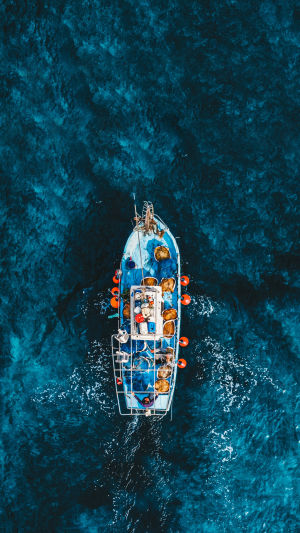Fishing has a rich history that dates back thousands of years, and today, it has become a popular sport and a vital industry that provides food and livelihoods for many communities.
The history of deep ocean fishing can be traced back to ancient civilizations such as the Greeks, Romans, and Egyptians, who used simple fishing techniques to catch fish in the open ocean.
However, it was not until the 15th century when European explorers discovered the abundant marine life in the Atlantic Ocean that deep ocean fishing became a significant industry. During this time, fishermen used traditional methods such as hand lines and nets to catch fish such as tuna, swordfish, and marlin.
In the late 19th century, the invention of the steam engine and the growth of the fishing industry led to the development of new fishing techniques such as longlining and trolling. Longlining involves laying a long line with hundreds of hooks attached to it in the ocean while trolling involves dragging baited lines behind a moving boat.
These new techniques allowed fishermen to catch more fish in less time and opened up new markets for fresh and frozen fish.
Today, deep ocean fishing is done using advanced technology and equipment such as sonar, GPS, and electric reels. Fishermen use specially designed boats that are equipped with advanced navigation systems, fish finders, and high-tech fishing gear.
These boats can travel long distances and stay out at sea for days or even weeks, allowing fishermen to explore remote fishing grounds and catch large and valuable fish.
One of the most popular methods of deep ocean fishing today is trolling. This involves dragging a line with multiple lures or baited hooks behind a moving boat. Fishermen use different types of lures and bait depending on the species of fish they are targeting.
Trolling is a highly effective method for catching large fish such as tuna, marlin, and swordfish.
Another popular method of deep ocean fishing is bottom fishing. This involves dropping a line with a baited hook to the bottom of the ocean floor, where fish such as grouper, snapper, and halibut live. Bottom fishing can be done using a hand line, electric reel, or a rod and reel. Fishermen must have knowledge of the ocean floor's topography and the species of fish that live there to be successful at bottom fishing.
In recent years, there has been a growing concern about the impact of deep ocean fishing on the environment and marine life.
Overfishing, bycatch, and habitat destruction are some of the main issues associated with deep ocean fishing. To address these concerns, many countries have implemented regulations and restrictions on deep ocean fishing, such as catch limits and gear restrictions.
In conclusion, deep ocean fishing has a long and rich history that has evolved over time with advances in technology and fishing techniques. Today, it is a popular sport and an important industry that provides food and livelihoods for many communities.
However, it is essential to practice sustainable fishing practices to protect the ocean's delicate ecosystem and ensure that future generations can enjoy the thrill and excitement of deep ocean fishing.





